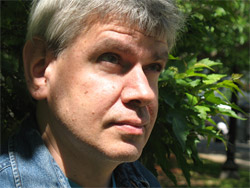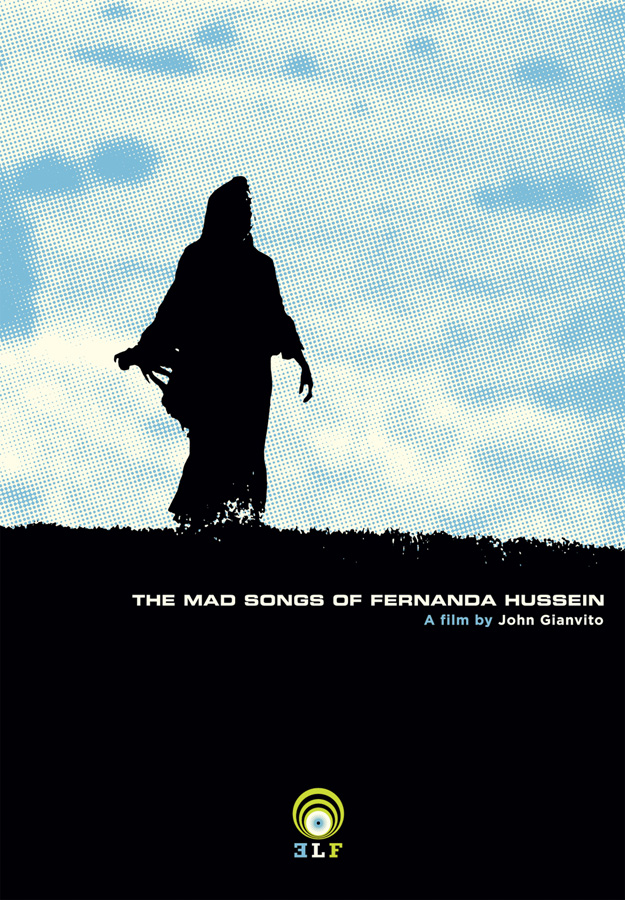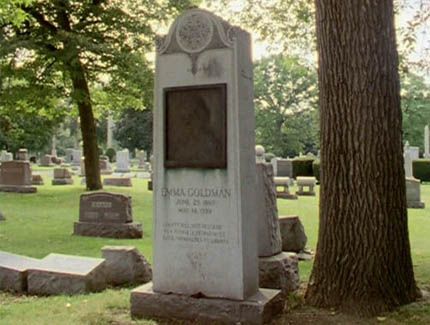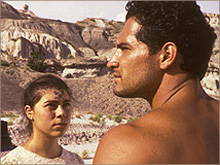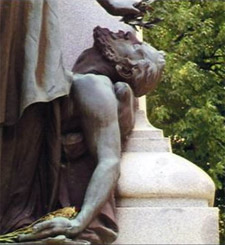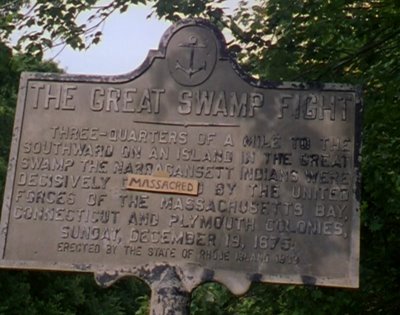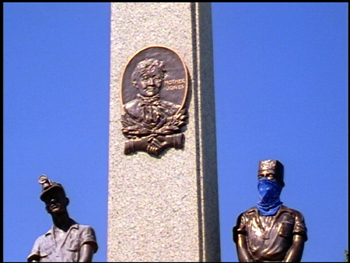This article appeared in the Winter 2008-2009 issue of Film Quarterly. The Mad Songs of Fernanda Hussein remains for me one of the key American independent American features of the past decade or so, and it’s hard for me to think of another that’s more personally important to me. — J.R.
HISTORICAL MEDITATIONS IN TWO FILMS BY JOHN GIANVITO
by Jonathan Rosenbaum
It’s been gratifying to see the almost instant acclaim accorded to John Gianvito’s beautiful, fifty-eight-minute Profit Motive and the Whispering Wind (2007), especially after the relative neglect of his only previous feature-length film, the 168-minute The Mad Songs of Fernanda Hussein (2001).
The more recent film — a meditative, lyrical, and haunting documentary about grave sites that won the grand prix at the Entervues Film Festival in Belfort in 2007 and both a Human Rights Award and a special mention at the Buenos Aires Festival of Independent Film in 2008 — also received an award at the Athens International Film and Video Festival in Ohio and was named the year’s best experimental film by the National Society of Film Critics. (Full disclosure: I nominated Profit Motive for the last of these awards, and headed the jury of the same Buenos Aires film festival in 2001, which gave The Mad Songs its top prize.)
The Mad Songs focuses on the irreparable effects of the first Gulf War in 1991 on three separate powerless people in New Mexico (which is where the film in its entirety was shot). Profit Motive focuses on the grave sites of several dozen heroes of progressive struggles throughout American history.
These topics are of course quite different, yet the differences between the films aren’t nearly as substantial as they might initially appear to be. Both are predicated on and filmed around subjects that are physically absent — the Persian Gulf in The Mad Songs, the dead heroes of Profit Motive — and ones that viewers are invited to imagine, think about, and mourn in some fashion. In fact, I think both films are enhanced and complicated immeasurably as soon as one sees them in relation to one another rather than as separate and isolated forays. Both films are dedicated to examining political struggles in the U.S. and how these struggles are emotionally, intellectually, and historically assimilated.
Never morbid, and too gentle to qualify as strictly didactic, Profit Motive invites us to accompany Gianvito on a casual, fact-finding tour of American history that’s as much concerned with what is lost as what is found. It was shot over the course of three summers whenever Gianvito wasn’t teaching; the 16mm Bolex he used prevented him from filming any image continuously for any longer than twenty-five seconds, although he managed to disguise the few cuts he made on a few occasions when he needed to accord the viewer more reading time.
He includes in his pantheon such famous figures as Thomas Paine, John Brown, Henry David Thoreau, Chief Crazy Horse, Frederick Douglass, Susan B. Anthony, Harriet Tubman Davis, Eugene Debs, Mother Jones, Emma Goldman, Medgar Evers, Lorraine Hansbury, Malcolm X, John Dos Passos, Paul Goodman, Paul Robeson, and Dorothy Day as well as a virtually equivalent number of unknown or lesser known names, deliberately goading our curiosity to learn more about them. (One critic has expressed skepticism to me about the absence of certain key figures, such as Martin Luther King, but it’s important to note that Gianvito’s selection remains highly personal without in any way aspiring to exhaustiveness.)
At first glance, Gianvito appears to have gone from boiling, impotent rage about a few marginalized victims and dissidents in The Mad Songs to a kind of hushed, mourning tranquility in Profit Motive as he ponders the lives and memory traces of a good many activists — all of whom appear to have had a far greater historical impact than the characters in The Mad Songs (even though their remains are in mainly unremarked locations). This may help to account for the much wider and warmer appreciation accorded to the latter film in both the U.S. and abroad, despite the fact that The Mad Songs has been available on DVD (issued by the small label ELF, or Extreme Low Frequency) since 2005. But of course a radically different change in political climate since early 2001 has also surely had a lot to do with the respective receptionsof both films — more, I would argue, than any particular change in Gianvito’s politics or in his measured mastery of framing and editing. The distance traveled from the embrace of the American public of the first Gulf War in 1991 and the same public’s eventual (if belated) recoil against the occupation of Iraq a decade-and-a-half later is considerable, but this is a journey that is in some ways implicitly recorded in the juxtaposition between Gianvito’s two features.
Both films are the poetic and pantheistic expressions of a committed leftist, a fiercely determined independent ready to brook all obstacles, and a passionate cinephile with an extensive curatorial and programming background, known particularly for his work at the Harvard Film Archive. (The second section of the three-part Mad Songs is titled, “Orphans of the Storm.”) Both films can be said to have overall structures that seemingly move from isolated and lonely individuals to a massive and potent collective experience — though one should add that the single collective experience viewed at the end of The Mad Songs is regarded far more darkly and complexly than the celebratory montage of footage from various protest marches in Boston, New York, and Washington, D.C. concluding Profit Motive, which relate to the Iraqi war, immigrant rights, and gay rights, among other issues — footage played against throbbing drum beats that is clearly and effectively employed for agitprop and rallying purposes. Furthermore, both films employ a kind of stylistic bricolage that can shift abruptly from meditative lyricism to passionate agitprop and from conventional documentary to musical interludes, art and literary references, and personal experimental filmmaking verging on abstraction.
In The Mad Songs, Gianvito can also shuttle with some regularity between conventional documentary and conventional fiction when he isn’t intricately mixing the two, or veer off into a brilliant and devastating montage sequence devoted to Desert Storm war toys and various things inscribed on them (e.g., “not recommended for children under three years old”; “Eat lead, Cobra!”; “Let’s party!”). In Profit Motive, he can suddenly make room for brief flashes of discontinuous and seemingly unrelated animation (his own) punctuating his live-action footage. Yet for all their eclecticism, both films are principally emotional rather than intellectual experiences.
Read superficially, both films are susceptible to the accusation of belonging to a leftist syndrome, “the ennobling of victimization,” astutely analyzed by Thom Andersen in his essay “Red Hollywood”: “The ennobling of victimization is dangerous, I think, because it requires the victims to keep in their places to maintain their moral claims. If they revolt they must be defeated, if they are to keep our sympathy and indulgence. They must remain victims. When Castro’s rebels in Cuba and the Sandinistas in Nicaragua won their revolutions, they immediately forfeited the considerable goodwill their seemingly hopeless struggles had earned them in the United States.” (1) Citing Robin Blackburn (“Bourgeois sociology only begins to understand modern revolutions in so far as they fail”), Andersen goes on to critique from this vantage point the romanticizing and glorifying of “revolutionary defeats” in such revered political films as Viva Zapata! (1952), The Battle of Algiers (1967), and Burn! (1970).
In fact, The Mad Songs, by centering on three figures who are principally seen as victims, is theoretically more open to this charge than Profit Motive, which is more concerned with political struggle per se than with either success or failure. But one must also acknowledge that The Mad Songs is largely conceived as a kind of therapeutic gesture, an attempt at healing — comparable, mutatis mutandis, to something like The Best Years of Our Lives (1946). As Gianvito said to Ray Privett in an interview, “I feel that to some extent the Gulf War is like this monster in the closet that we don’t talk about, but about which somehow in our conscious or unconscious minds we carry a lot of shame and unresolved feelings. And I think people know that. The rapidity and intensity with which it unfolded and the rapidity with which it vanished left the country traumatized. And unless we face up to and examine those traumas, we will continue to behave in more and more wounded manners.” (2)
I should confess that my gratitude for The Mad Songs — which is part of what led me to lobby successfully for it being awarded the jury prize in Buenos Aires — is closely tied to its therapeutic power. Gianvito himself says that he made that film in order “to keep [himself] from going crazy”: “The whole thing emerged out of inarticulate rage I carried within me, not only during the Persian Gulf War but through the years that followed, as I progressively learned more and more about what had in fact transpired during the war and its unfolding consequences on the lives of so many people.” (3) In order to make it, Gianvito had to travel repeatedly from his home in Massachusetts to New Mexico, which he selected as his location largely because of its physical resemblance to the Persian Gulf.
For me, the personal effect of this feature was almost like hearing a cry of shared pain and rage after a decade of deafening silence. The problem wasn’t simply that so many friends and family members, virtually all of them liberals, supported the war without qualification (as some of them would also do the Iraqi invasion, at least before its stated motives proved to be spurious); it was that so many of them were positively gleeful about it, even after admitting in their euphoria that it entailed killing a substantial number of innocent civilians. For me this offered early glimmers of a terrifying conviction that persists for many Americans today — that we can not only “liberate” countries we know next to nothing about, but also that we can confidently define our military goals while remaining indifferent to the wills and lives of the people we are supposedly devoted to liberating. (It’s important to stress that the principal reason given by editors at the New York Times for rejecting an op-ed piece by John McCain in summer 2008 was his refusal or inability to pinpoint what he meant by a military “victory” in Iraq. To all appearances, the operative phrase in his vocabulary on this topic is “with honor,” which clearly alludes to the welfare of Americans, not Iraqis.)
Given such bloodlust and such a glib desire to remain uninformed (as reflected in a TV clip in The Mad Songs where we see TV talkshow host Arsenio Hall quip in 1991 that “Iraqi intelligence” is an “oxymoron” — a “bright” observation that obviously required no illustration or backup to get rounds of laughter and applause), it’s hardly surprising that so many were easily persuaded to invade Iraq on a flimsy pretext in the second Gulf War.
The three fictional stories of The Mad Songs intersect only twice — or possibly three times, an ambiguity the film prefers to leave open. The title heroine is a young Latina (Thia Gonzales, the only professional in the cast) in Los Lunas, separated from her Arab husband (who returned to Egypt when he couldn’t find work), whose two children are killed because of their surname shortly after the outbreak of the war. A teenage boy in Santa Fe named Raphael (Dustin Scott) is so alienated by his parents’ intolerance of his antiwar sentiments and activism that he leaves home and becomes a street person. (Gianvito has a cameo as one of Raphael’s teachers, someone who shares his beliefs.) And Carlos (Robert Perea), a Chicano and vet returning to his home in Pecos, is so troubled by his experiences in Saudi Arabia, including some atrocities he participated in, and by such consequences of his service as losing his former job and a rash that appears to derive from Agent Orange, that he finds it easier to relate to the two hookers he hires than to his loyal girlfriend.
The first two of these plots clearly intersect when one of Raphael’s friends reads aloud a news story about Fernanda Hussein, describing some of the aftermath of her own story. (Having become mentally unstable, she’s arrested for the murder of her own children and subsequently released, then disappears and reportedly has become homeless, either in Mexico or near the border). Much later, she reappears at the home of an old friend, having by now regained her sanity. And toward the beginning of the film’s final sequence, at a large fiesta held in Santa Fe in which an ancient ritual known as Zozobra takes place (featuring a gigantic burning effigy, and for me evoking some accounts of the Mexican Day of the Dead), the first two plots intersect a second time when Fernanda is one of the passing members of the crowd who signs Raphael’s antiwar petition.
Less conclusive but highly suggestive is an earlier moment, in a canyon, that takes place before Fernanda’s first reappearance, when Carlos, in a hysterical and frustrated rage after trying to describe his wartime experiences to his girlfriend, starts to rape her, and his attention is suddenly drawn away by an eerie and sustained cry of misery that he hears resounding through the open spaces and that he can’t identify. Whether or not this is one of the mad songs of the title and belongs to Fernanda is left entirely up to our imaginations.
This is a fairly simple, even simplistic schema for a lengthy narrative feature, and some of the execution of it is rudimentary. But even though The Mad Songs can be described in some ways as an amateur production, it arguably has the kind of amateur credentials called to mind by filmmakers as diverse as Jean Cocteau, Emile De Antonio, Robert Kramer, and Jean Rouch. And even if it begins in rage, it concludes, in the powerful and cathartic Zozobra sequence, with intimations of sorrow, mystery, simple curiosity, and awe as Gianvito steadily contemplates, through the giant burning figure and its orgiastic effect on a large crowd, all the things he has been railing against for past two and a half hours.
In some respects, this sequence recalls his earlier screed against war toys (which intersperses a lavish fireworks display with a comparable rhythmic effect), but here the tone is much more detached and mellow, and the aforementioned emotions — awe, curiosity, mystery, sorrow — dominate. And these are more or less the same emotions with which Profit Motive begins.
***
As previously noted, the main focus of Profit Motive is grave sites and markers scattered across the U.S. and their various inscriptions, all of them belonging to heroes and/or victims of progressive struggles from the sixteenth century up through the twenty-first. These sites and markers are all cited in the final credits like a cast list, and they seem fairly evenly divided between relatively known and relatively unknown figures. They progress from the colonial period and early slave revolts to the present day — all the way from Anne Hutchinson (1591–1649), banished from the Massachusetts Bay Colony in 1638 for maintaining that ordinary people could interpret the Bible on their own (though killed with her family in Long Island over a decade later, by Native Americans, simply for being in “the wrong place at the wrong time” (4) (as Gianvito put it in an interview with Benjamin Strong), and Mary Dyer (c. 1611–1660), a “witness for religious freedom” hanged on the Boston Common in 1660, to I. F. Stone (1907–1989), buried with his wife, and César Chávez (1927–1993).
Most of the names and struggles are taken from Howard Zinn’s A People’s History of the United States: 1492–Present, which Gianvito credits as his inspiration and dedicates the film to. The film’s epigraph (by Claire Spark Loeb, a name unknown to me) is, “The long memory is the most radical idea in America”; this is immediately followed by the sound over black leader of an 1894 recording of a Native American chant, “Kiava Ghost Dance No. 12,” transliterated and then translated in subtitles.
In the film’s opening stretches, Gianvito is even more attentive to the inscriptions and markings of time and weather on gravestones than he is to the man-made inscriptions, the words and art, found on the same objects. That is to say, the lives celebrated here initially appear to be almost stumbled-upon incidental data in locations that are already being regarded as places of meditation, reflection, and worship. History, the film seems to be saying, is something to be teased out and approached somewhat circumspectly rather than something to be delivered to the viewer directly. The names and statements engraved on the stone are only part of the story.
The film’s principal artistic inspiration seems to be the landscape films of Jean-Marie Straub and Danièle Huillet, in which natural settings, past political struggles, and the wind play similarly prominent roles. In fact, one might say that the wind gets far more play in this film than death does — or the profit motive, for that matter. Gianvito’s various ways of approaching the graves, memorials, and shrines through the surrounding landscapes that nestle and sometimes hide these largely unremarked sites is every bit as important as their inscriptions. Like the Straub–Huillet landscape films — which include, among many others, Fortini/Cani (1976), Too Early, Too Late (1982), The Death of Empedocles (1987), Cézanne (1989), and Workers, Peasants (2001) — Profit Motive may sound minimalist but in fact is very far from being so, in part because the leisurely meditative mode both allows and invites the viewer to become far more attentive to details and nuances than one can be in most narrative films.
Where Gianvito deviates most crucially from Straub–Huillet’s example is in his desire to explain on screen whom these people and what these struggles were, almost always through allowing us to read the inscriptions; one might even say that the central role played in Straub–Huillet films by recited texts, usually on screen, is performed here by these inscriptions, and Gianvito carefully provides us with all the time we need to read them. (By contrast, the repeated pan of Straub–Huillet’s Europa 2005 – 27 octobre, a 2006 video without text or title of any kind, appears to presume that the date is all that’s needed for viewers to identify the French location and what happened there — a position that I believe can be criticized as provincial rather than elitist.)
To make another comparison, the grave-site markers in Profit Motive are filmed with the same contemplative attentiveness that James Benning shows towards the trains rushing through his RR (2007), and their cumulative impact has a comparable expansive effect. Yet the historical sensibility Gianvito exercised on his settings registers quite differently from Benning’s. Benning seems to regard the industrial waste associated with trains both nostalgically and apocalyptically, seesawing dialectically between these extremes as he invites us to perceive the trains both in relation and in opposition to the various landscapes they pass through. Gianvito’s more lyrical sense of setting is much closer to the transcendentalism of a Thoreau or a Terrence Malick, imparting an almost preternatural sense of primeval (and at times even timeless) calm — a mystical communion with deserted landscapes that calls to mind the fact that Gianvito recently edited a collection of interviews with Andrei Tarkovsky. (5)
Unlike RR, which suggests at times the kind of epic exhaustiveness being aimed for in John Dos Passos’s U.S.A., Profit Motive wants to widen our horizons without pretending to stretch them to the limits, repeatedly making us realize that there are many other unrecounted stories of struggle waiting to be told. Its sense of modesty is enhanced and replicated in most of the sites that it visits.
***
One of the more useful premises of Zinn’s engaging, 729-page book, established in its first chapter, is “that we must not accept the memory of states as our own . . . Nations are not communities and never have been. The history of any country, presented as the history of a family, conceals fierce conflicts of interest (sometimes exploding, most often repressed) between conquerors and conquered, masters and slaves, capitalists and workers, dominators and dominated in race and sex.”(6)
Profit Motive can be said to benefit from the same overall vision, even if it’s necessarily restricted in most cases to the particular understandings displayed in the site inscriptions (so that, for instance, we learn about why Anne Hutchinson was banished from Massachusetts, but not about why she and her family were slain by Native Americans). And I hasten to add that the film is also somewhat limited by the kind of slant that Zinn readily owns up to, a couple of pages earlier, when he insists that his “argument cannot be against selection, simplification, emphasis, which are inevitable for both cartographers and historians,” but goes on to insist that the distortions of mapmakers are necessary for everyone who needs maps.
Moreover, the “historian’s distortion is more than technical, it is ideological; it is released into a world of contending interests, where any chosen emphasis supports (whether the historian means to or not) some kind of interest, whether economic or political or racial or national or sexual.” (7)
A good example of what Zinn means by this can be seen in his brief treatment of Mrs. Rosa Parks (1913–2005), the seamstress whom he rightly credits with launching the Civil Rights movement in late 1955 when she refused to relinquish her seat near the front of a bus in Montgomery, Alabama, was arrested for her defiance of the Jim Crow laws in doing so, and sparked the Montgomery bus boycott. Zinn typically follows the lead of Martin Luther King in giving Parks full credit as an activist but none as a strategist, overlooking the fact that earlier in 1955 she’d attended a workshop on nonviolent, pro-integration tactics at the Highlander Folk School in Monteagle, Tennessee, some of whose workshops King also attended. Eliding this part of Parks’s contribution could be interpreted both as a shrewd tactical move (to make her rebellion appear more spontaneous than it actually was) and as a sexist omission that was all too characteristic of 1960s male leftists, including King himself, who may have wanted to figure in the public eye as the only prominent tactician of the Movement. Either way, Zinn’s treatment of Parks perfectly illustrates his own point.
I should stress that Parks’s grave site, in Detroit, is not one of those filmed by Gianvito, though it theoretically could have been. Its epitaph reads, apparently by her own choice, “Rosa L. Parks, wife”. This further suggests that the implication of Gianvito’s handling of history — that an important part of it can be (and is) written on headstones — is limited in much the same way as Zinn’s is. Yet this is a limitation that comes naturally and inevitably with a desire to expand our historical parameters in the choice of people to be examined, as Zinn is also interested in doing.
In one of the rare instances in which he doesn’t depend exclusively on a grave or memorial inscription for identification, Gianvito devotes a lengthy intertitle to explain who Uriah Smith Stephens (1821–1882) was — the cofounder and first leader of the first national labor union in the U.S., the Knights of Labor. With the demeanor of a patient schoolteacher (echoing his cameo in The Mad Songs), he’s interested in sharing discoveries with us, materially as well didactically, drawing upon whatever materials he needs, and he accompanies his fact-finding and soul-searching journeys with a sense of poetry and a kind of passion that are found in the finest instructors.
1. Thom Andersen, “Red Hollywood,” in “Un-American” Hollywood, ed. Frank Krutnik, Steve Neale, Brian Neve, and Peter Stanfield (New Brunswick, NJ: Rutgers University Press), 2007, 234.
2. www.sensesofcinema.com/contents/02/20/gulf_war.html.
3. From a Director’s Statement dated February 2001 and included with the DVD of the film released by Extreme Low Frequency.
4. www.thefanzine.com/articles/film/242/interview_with_director_john_gianvito/3
5. Andrei Tarkovsky: Interviews, ed. John Gianvito (Jackson: University Presses of Mississippi, 2006).
6. Howard Zinn, A People’s History of the United States, rev. edn (New York: HarperCollins, 2003), 10.
7. Ibid., 8.

